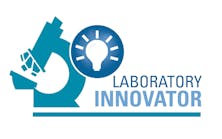Ebola
British researchers announce trials in Guinea of new 15-minute test for Ebola. A rapid, point-of-care diagnostic test for the Ebola virus will undergo clinical trials in the coming weeks at the Ebola treatment center in Conakry, Guinea. The trial is one of six health research projects that have been jointly funded by the Wellcome Trust and the government of the United Kingdom.
The trial of the 15-minute Ebola test, led by researchers at the Pasteur Institute in
Dakar, Senegal, will be deployed using a “mobile suitcase laboratory” which is designed for low-resource settings. The portable laboratory includes a solar panel, a power pack, and a results reader, which is the size of a small laptop. The reagents used in the test are available as dried pellets, which are “cold-chain-independent,” meaning that they can be used and transported at room temperature. Similar to tests currently in use, the new test detects the genetic material of the virus. The pilot trial will test whether the reagents are safe and effective to use with Ebola patients’ blood and saliva samples.
Val Snewin, PhD, International Activities Manager at the Wellcome Trust, says, “A reliable, 15-minute test that can confirm cases of Ebola would be a key tool for effective management of the Ebola outbreak. This pilot study is particularly promising because researchers have considered how to make the test suitable for use in remote field hospitals, where resources such as electricity and cold storage are often in short supply.”
Cancer
Mayo Clinic study finds triple-negative breast cancer patients should undergo genetic screening. Most patients with triple-negative breast cancer should undergo genetic testing for mutations in known breast cancer predisposition genes, including BRCA1 and BRCA2, a Mayo Clinic-led study has found. The findings come from the largest analysis to date of genetic mutations in this aggressive form of breast cancer. The results of the research appeared recently in the Journal of Clinical Oncology.
The study found that almost 15 percent of triple-negative breast cancer patients had deleterious mutations in predisposition genes. The vast majority of these mutations appeared in genes involved in the repair of DNA damage, suggesting that the origins of triple-negative breast cancer may be different from other forms of the disease.
Triple-negative breast cancer makes up about 12 percent to 15 percent of all cases. Recent studies have suggested that triple-negative breast cancer patients might harbor genetic mutations that make them more likely to respond to alternative treatments such as cisplatin, a chemotherapy agent, or PARP inhibitors, anti-cancer agents that inhibit the poly (ADP-ribose) polymerase (PARP) family of enzymes.
The researchers sequenced DNA from 1,824 triple-negative breast cancer cases seen at 12 oncology clinics in the U.S. and Europe, as part of the Triple-Negative Breast Cancer Consortium. They found deleterious mutations in almost 15 percent of triple-negative breast cancer patients. Of these, 11 percent had mutations in the BRCA1 and BRCA2 genes, and the rest had mutations in 15 other predisposition genes, including the DNA repair genes PALB2, BARD1, and RAD51C. No mutations were found in predisposition genes involved in other processes such as the cell cycle.
Drugs of Abuse
Primary care doctors report prescribing fewer opioids for pain. Nine in 10 primary care physicians say that prescription drug abuse is a moderate or big problem in their communities and nearly half say they are less likely to prescribe opioids to treat pain compared to a year ago, new Johns Hopkins Bloomberg School of Public Health research suggests. Primary care doctors also appear to recognize many risks of prescription opioid use, including addiction and death by overdose, according to findings reported recently in JAMA Internal Medicine.
“Our findings suggest that primary care providers have become aware of the scope of the prescription opioid crisis and are responding in ways that are important, including reducing their overreliance on these medicines,” says study leader G. Caleb Alexander, MD, MS. Alexander and his colleagues sent surveys to a nationally representative sample of 1,000 U.S. internists, family physicians and general practitioners, with 58 percent responding.
Among the findings: Eighty-five percent of respondents say they believe that opioids are overused in clinical practice. Many report they are “very” or “moderately” concerned about serious risks such as addiction (55 percent reporting “very concerned”) and motor vehicle crashes (44 percent) that may be associated with opioid overuse. Many also report they believe that adverse events such as tolerance and physical dependence occur “often,” even when the medications are used as directed.
Lab of the Year
Nominate your lab for “Lab of the Year.”
Medical Laboratory Observer is gearing up to honor three outstanding clinical laboratories. A first-prize winner and two runners-up will be selected and saluted in the April 2015 issue. Online nominations are being accepted through January 26. Any nomination must be original and exclusive to MLO and not have been submitted, either original or edited, to any other publication or online media outlet currently or within the previous year.
What are the “requirements” to be a Lab of the Year nominee? Clinical labs of any size and location are eligible. Most broadly, you will want to demonstrate your lab’s contributions to quality patient care. Beyond that, consider the categories that appear in the online nominating form: customer service, contributions to patient care, teamwork, productivity, efficiency, quality control, innovations, creativity, and lab inspection scores. Emphasize what is particularly successful about your lab, in terms of engaging with and responding to the needs of your community, contributing to the success of the larger institution, meeting an unaddressed need, making a difference in people’s lives. What makes your lab outstanding, and what makes your lab special?
The MLO team looks forward to reading about some exemplary and inspiring labs—and celebrating in print how three of them are having a positive impact on the profession and on patient care in their communities. Visit http://www2.mlo-online.com/LabOfTheYear to nominate your lab.
Education
CLSI offers new eLearning Certificate Program on implementing the cost of quality in the laboratory. The Clinical and Laboratory Standards Institute (CLSI) has released a new eLearning program, Implementing the Cost of Quality in the Laboratory Certificate Program. This online learning program provides guidance to laboratories in understanding and managing the different types of quality costs that affect processes, services, and financial well-being in the laboratory setting.
Managing different types of quality costs is crucial to understanding and communicating various expenditures on a laboratory’s budget. Quality cost information is especially useful when justifying retention of budget allocations for costs that support quality in laboratory services and actions to reduce failure costs. This eLearning Certificate Program is based on the CLSI report QMS20-R—Understanding the Cost of Quality in the Laboratory, which provides guidance on how a laboratory can continually improve its financial performance.
This eLearning program goes one step further than the report by demonstrating the cost of quality premise and its impact on a laboratory’s work, such as the roles of quality costs in a laboratory quality management system and the core elements of a philosophy on cost and quality. The program assists laboratories in identifying the different types of quality costs among failure, appraisal, and prevention costs, helps laboratories calculate their quality costs, and finds ways to apply failure cost to a selected laboratory indicator or nonconforming event. It also explains how to promote and manage a cost-of-quality culture through a review of successful quality cost initiatives from a real-life laboratory case study. The program can be completed in approximately four hours for 4.0 P.A.C.E. continuing education credits.




